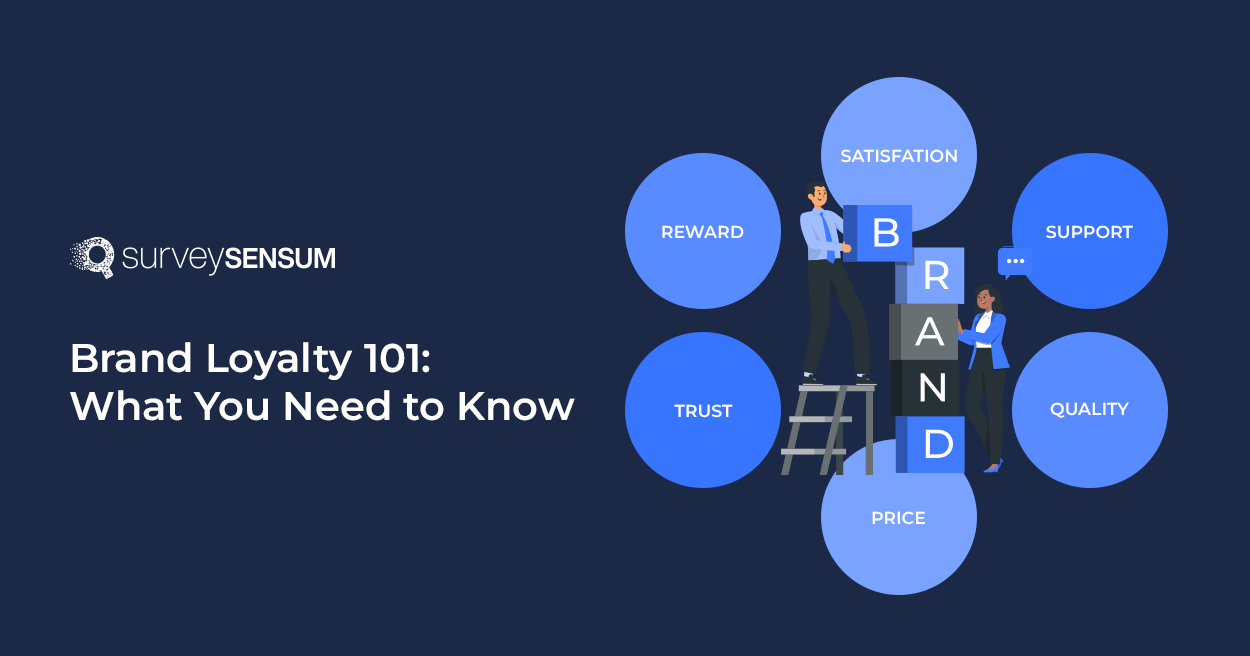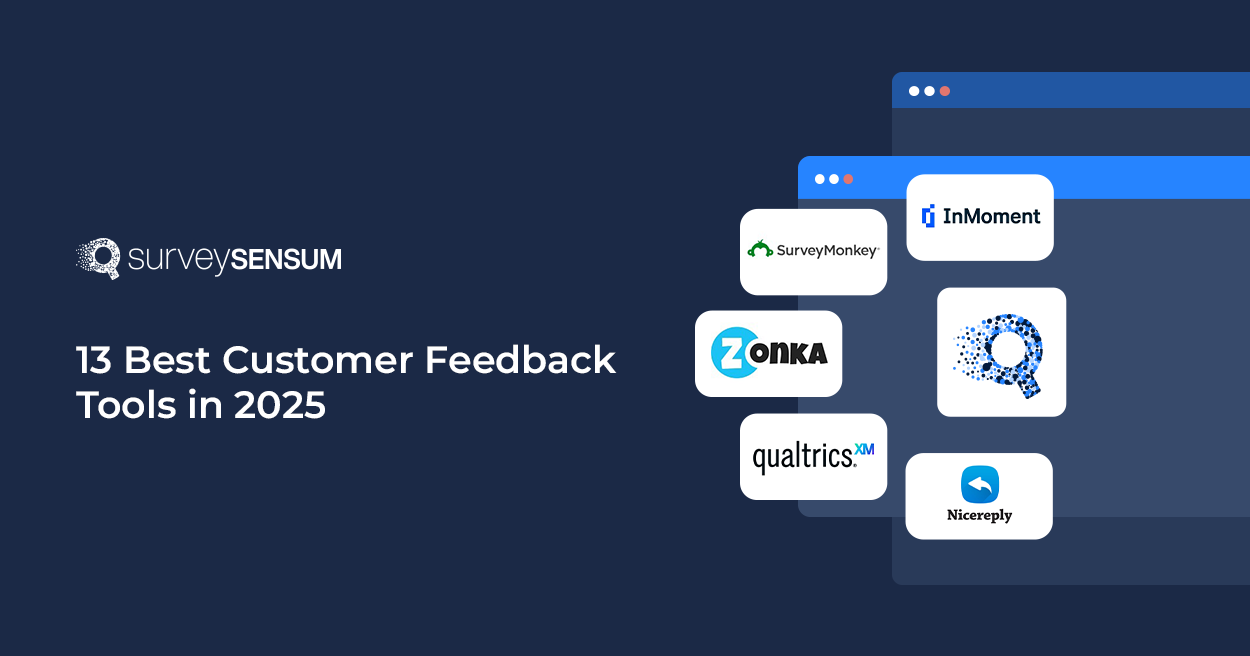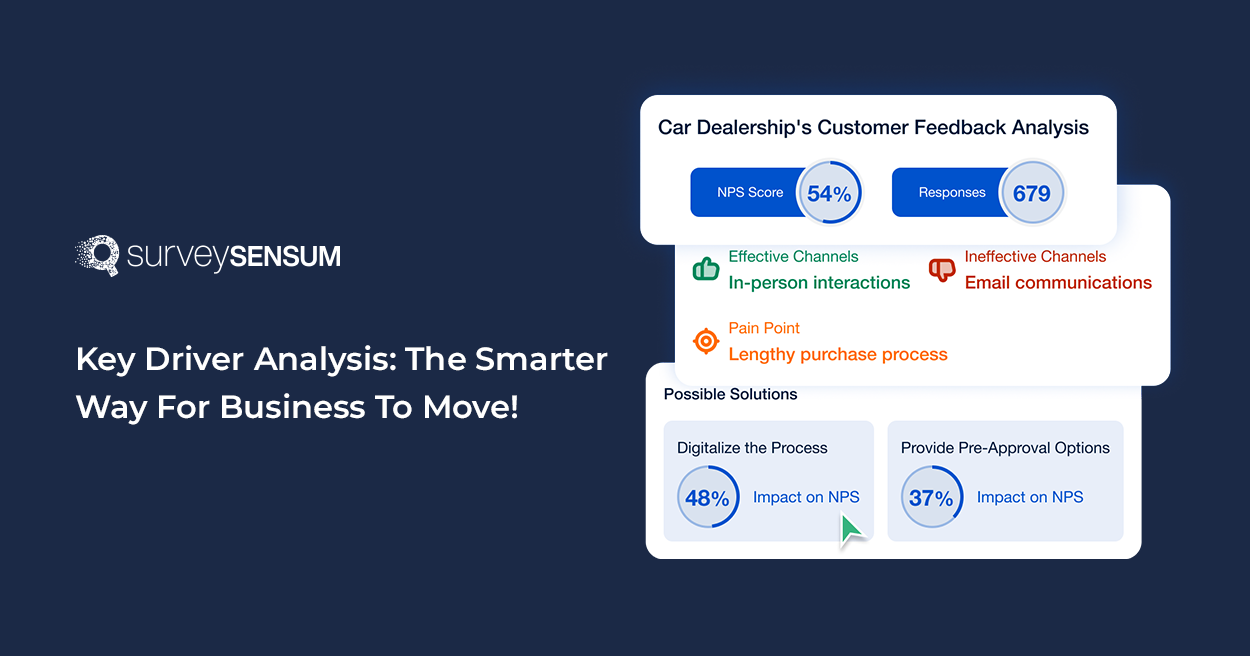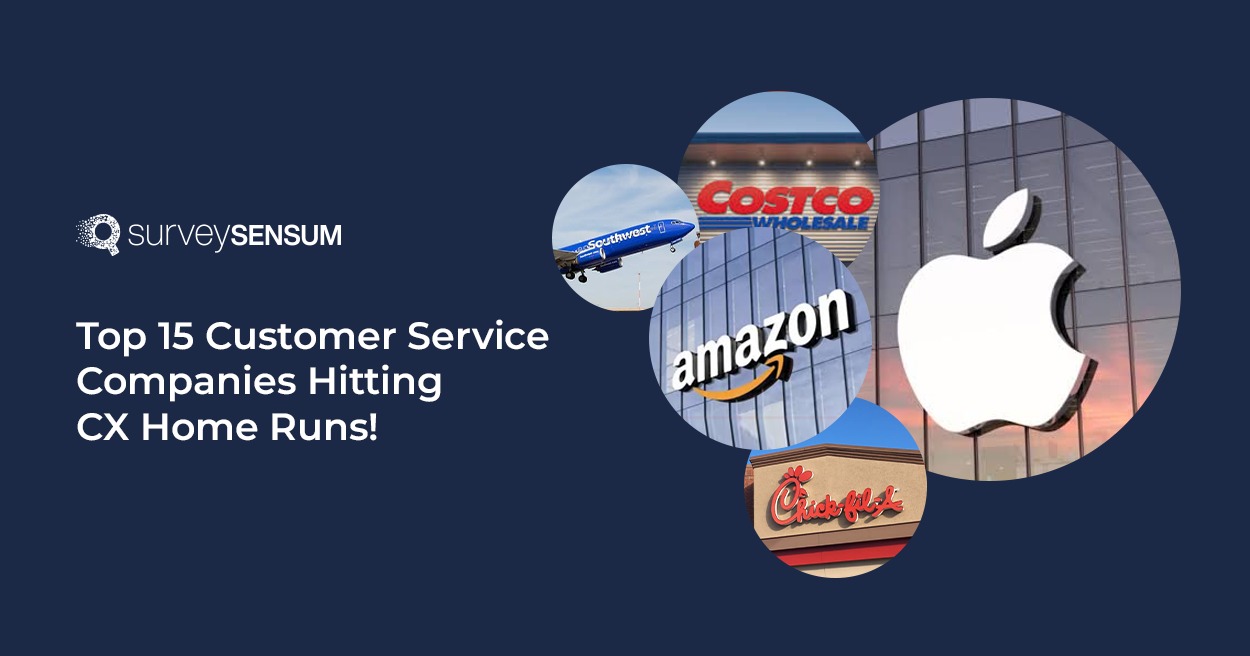
“Satisfaction is a rating. Loyalty is a brand.” — Shep Hyken.
Brands that excel in cultivating loyalty experience 2.5X faster revenue growth than their industry peers.
But what does this truly mean?
Well, brand loyalty goes beyond simple recognition of your products; it’s about the profound trust and emotional connection customers have with your brand.
However, the question arises – in what way can you convert casual customers to passionate brand advocates?
In this blog post, we will delve into the ins and outs of brand loyalty, and types of brand loyalty, talk about some examples of successful brands and walk you through how to measure and build brand loyalty.
Let’s dive in, shall we?
What is Brand Loyalty?
Brand loyalty happens when your customers buy your brand over and above competitors, even if they can find cheaper or less complicated options. This shows a deep bond between you (brand) and the customer, as customers stick with you because of the values that your brand represents.
Customer loyalty often looks at buying again because of rewards or sales, but brand loyalty goes beyond that. It centers on the intangible, perceived value of your offerings. Loyal customers actively choose your brand over competitors, even if it means paying a premium because they recognize a unique value that sets you apart.
In the next section, we will go over the importance of brand loyalty and how it plays such a large role in your business’s success and growth.
Why Brand Loyalty Matters?
The heartbeat of successful businesses is brand loyalty and brand reputation management. According to The 2023 State of Social Media Report, business leaders recognize that building brand reputation and loyalty is their top priority.
1. Transformative Spending Power
Loyal customers are worth their weight in gold. They spend 67% more on products and services compared to new customers. This increased spending isn’t just a bonus; it’s essential for boosting your bottom line. In fact, loyal customers buy more often—90% more frequently than new customers. By fostering loyalty, you can ensure a consistent revenue stream that strengthens the company’s long-term financial health.
2. Increased Customer Lifetime Value (CLV)
For those loyal customers who make repeat purchases, CLV can grow exponentially. In fact, a 7% increase in brand loyalty yields a 5% higher CLV. This frequency creates a predictable revenue model, boosting both revenue and profitability. Over time, loyal customers keep coming back; you don’t have to spend a fortune to find new customers.
3. Competitive Advantage
Customers who stick with your brand support your position in the market and reduce price sensitivity. This loyalty builds a strong reputation that’s hard for others to chip away at, and loyal customers often spread the word, bringing in new faces organically. However, you have a loyal customer base that can help your brand sail through economic ups and downs, making you stronger when the times get tough.
The power of loyalty is understood by us through the four main types that dictate customer behavior and contribute to long-term success.
4 Types of Brand Loyalty
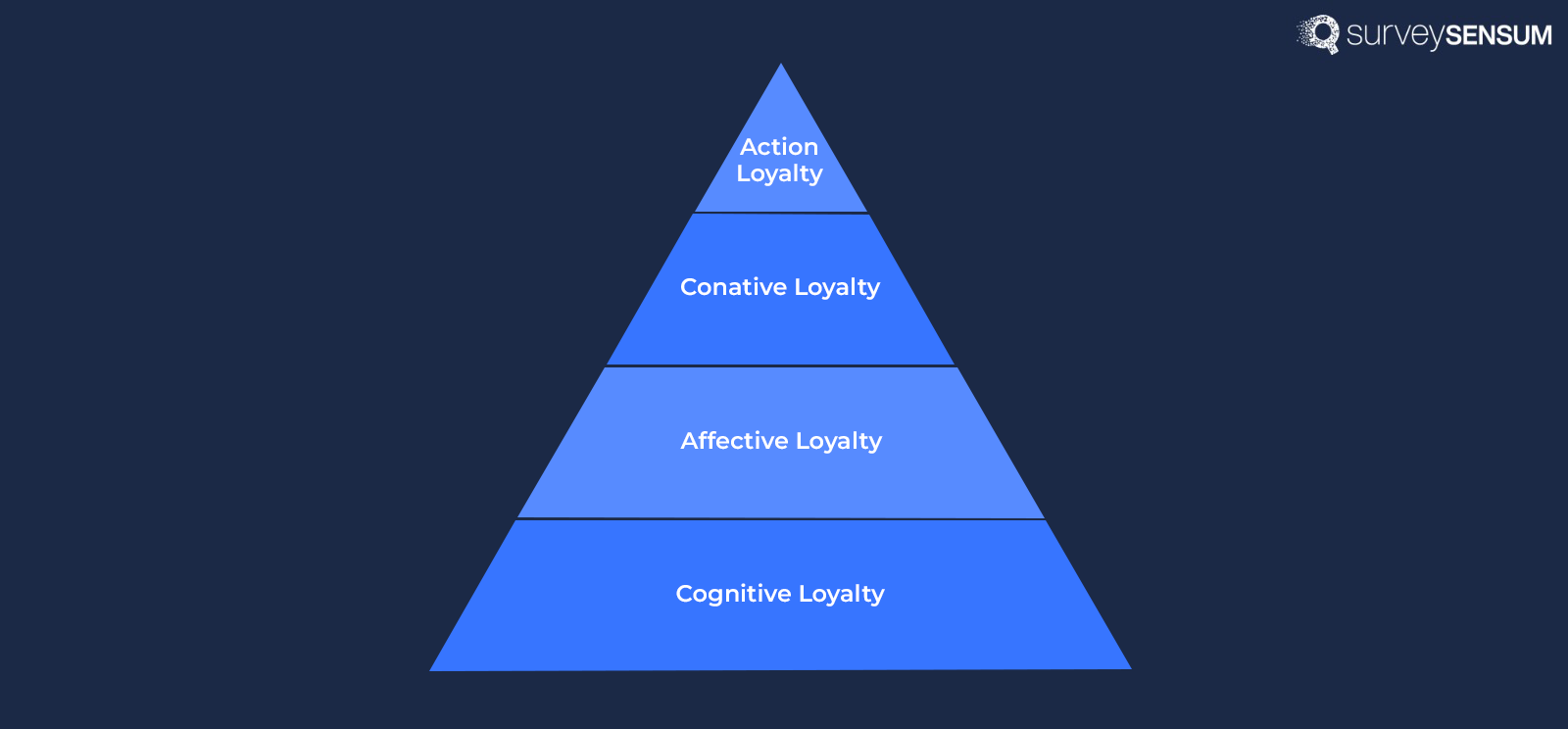
1. Action Loyalty
Action loyalty goes beyond the intention to buy; it’s a habitual commitment where customers consistently choose the brand out of loyalty. It represents the highest level of loyalty, where customers become invaluable assets, even co-creating value with the brand. If you’re measuring action loyalty, check churn, refer rates, and levels of engagement.
2. Conative Loyalty
Conative loyalty takes things to the next level with a strong intention and commitment to stick with your brand, even when other options arise. These are your brand’s advocates who stay loyal no matter what. They resist the temptation to switch to a competitor and remain fiercely devoted. You can measure conative loyalty by looking at metrics like customer retention rate and loyalty program participation.
For instance, Apple is a great example—many of its customers demonstrate conative loyalty by continuing to buy its products due to the strong ecosystem and brand identity, regardless of competitive offerings.
3. Affective Loyalty
This type of loyalty goes deeper; not only do customers pick your brand, but they also enjoy it—this is affective loyalty. The reason is the emotional connection generated by positive personal experience and satisfaction. Affective loyal customers are much more likely to return and recommend your brand to other people. Key metrics here include NPS, CLV, and repurchase rate.
For instance, Nike creates a brand identity around empowerment, athleticism, and personal achievement, and through that, it creates affective loyalty.
4. Cognitive Loyalty
Cognitive loyalty is, at a very basic level, made up of rational decisions, and they choose your brand for logical reasons such as price, convenience, or quality. Here, there’s no emotional attachment; they’re just picking what makes sense, right now. If these customers see a better offer somewhere else, they may switch. To check loyalty, track things like market share, price concerns, or customer satisfaction.
Knowing these types will also allow you to understand where your customer base currently sits and, with it, develop targeted strategies that could build brand loyalty from cognitive to actionable. To build a strong brand while keeping costs low, use fractional marketing to hire niche experts like a marketing director or social media manager. They develop targeted strategies that turn awareness into lasting loyalty.
Measure customer loyalty without the hassle! SurveySensum’s NPS surveys are quick to deploy and a breeze to manage. Start capturing feedback today!/strong>
Having talked about all the different types of brand loyalty, it’s time to zoom in on some brand loyalty examples that really know how to build that loyalty and lead the pack in their industries.
5 Brand Loyalty Examples That Changed The Game
1. Apple: Creating an Exclusive Ecosystem
While there is a limited number of Android phone owners (when compared to iPhone owners), brand loyalty for the iPhone is pretty strong, with over 90% of customers sticking to the iPhone for their next upgrade. This isn’t just about high-quality products; Apple has created a seamless ecosystem that locks in users with ease of use, integration across devices, and a sense of belonging. Being part of the Apple world feels like being part of an exclusive club, and that’s a powerful pull for long-term loyalty.
2. Amazon: Elevating Customer Satisfaction to a Loyalty Strategy
Amazon has redefined customer loyalty through its innovative Prime membership program. Amazon is more than just products; it’s convenience and value, with perks like fast delivery, exclusive deals, and a big entertainment library and customers returning. The relentless focus of Prime on customer satisfaction has turned this into an integral part of millions of households around the world.
3. Lego: Building Lifelong Loyalty Brick by Brick
Lego’s skill in encouraging creativity in children as well as adults—and other companies would have a hard time repeating it. Lego allowed for endless possibilities of imaginative play and has built multigenerational loyalty. Customers are engaged whether this is their first set or whether it’s a long-established tradition of creativity because the brand’s timeless appeal remains. There’s a loyalty based on nostalgia, creativity, and cross-generational bonding.
4. Sephora: Rewarding Engagement with Gamified Loyalty
Unlike typical loyalty schemes, Sephora’s program of Beauty Insiders makes shopping a treat. For purchases, customers earn points, and have access to exclusive perks; they even participate in gamified challenges. This innovative approach keeps over 34 million beauty fans engaged and loyal; Sephora continues to be the first place beauty fans go when they need cosmetics.
5. Patagonia: Loyalty Rooted in Values and Sustainability
One company that stands out is Patagonia, which brands itself in the interests of, or in alignment with, customers’ values. ‘The Worn Wear’ loyalty program calls for buying secondhand, repairing, and recycling old products. This value-driven approach not only reinforces trust but also deepens the connection with eco-conscious consumers who want to support a brand that shares their ethical outlook.
These brands demonstrate that brand loyalty isn’t just about great products—it’s about building meaningful connections, offering exceptional value, and aligning with customers’ values.
Let’s move on to how you can measure and foster it.
How to Measure Brand Loyalty?
The measurement of brand loyalty isn’t just about tracking repeat purchases but about understanding what customers emotionally and psychologically connect to your brand. To get a better picture of brand loyalty. Here’s how you can measure it like a pro.
Surveys: Your Direct Line to Customer Sentiment
Gauging customer loyalty through surveys is an effective tool. Through targeted questions, you can learn how your customers feel about your brand, their buying behavior, what they expect from your brand, and whether they’d recommend your products to friends. Key metrics derived from surveys include:
- Customer Satisfaction: It’s a measurement of how happy customers are with what they receive from their customer experience. Usually, high satisfaction scores result in raised loyalty. Keep in mind that satisfaction encompasses multiple aspects. For instance, customers might love your pricing but find your stores inconvenient. Delve deep with questions like:
- How easy is it to engage with our company?
- How does our product quality compare to competitors?
Net Promoter Score (NPS): NPS captures loyalty in just one question. By asking how likely customers are to recommend your brand, you gain insights into their satisfaction and willingness to promote you. This metric is crucial—after all, loyal customers advocate for your brand. High NPS means you have a loyal customer base that promotes you!
Fuel your brand’s loyalty engine with SurveySensum’s NPS, CSAT & CES surveys, and detailed impact analysis for sustainable growth.
- Brand Trust: Establishing and maintaining trust is crucial for brand loyalty, particularly when businesses handle sensitive information, such as banks or healthcare providers. However, even brands that don’t deal with sensitive data must foster trust to encourage customers to explore new products or provide feedback. To assess trust levels, ask questions such as:
- Do you trust our brand?
- What can we do to maintain that trust?
- Brand Esteem: It reflects how customers perceive and value your brand, encompassing their respect and attraction toward it. Unlike brand awareness, which simply measures recognition, brand esteem captures the positive sentiment customers hold toward your brand. To understand esteem, consider asking:
- How positively do you regard our brand?
- Do you prefer us over competitors?
- Quality: It refers to how customers evaluate the ability of your products or services to meet their expectations. It’s a vital component of brand loyalty, as higher perceived quality often leads to greater customer retention. In fact, 74% of customers cite product quality as the primary reason for their loyalty to a brand. Ask questions like:
- How reliable do you find our brand?
- How would you rate the quality of our product?
Surveys unlock the insights needed to understand the drivers of brand loyalty, revealing what keeps them coming back. Armed with this knowledge, you can refine your strategies to create a logo brand experience that not only meets expectations but exceeds them, fostering deep-rooted loyalty.
Conclusion
Strong brand loyalty is like a lighthouse. It gives trust and keeps customers near your brand.
At SurveySensum, we know building loyalty needs a clear view of what your customers want and feel. Our feedback tools guide you, helping you find insights that boost satisfaction and build trust. By focusing on these parts, you can change casual buyers into loyal fans who want to share their good experiences.
The path to loyalty may be challenging, but the rewards are immense. Are you prepared to invest in building these invaluable connections?






